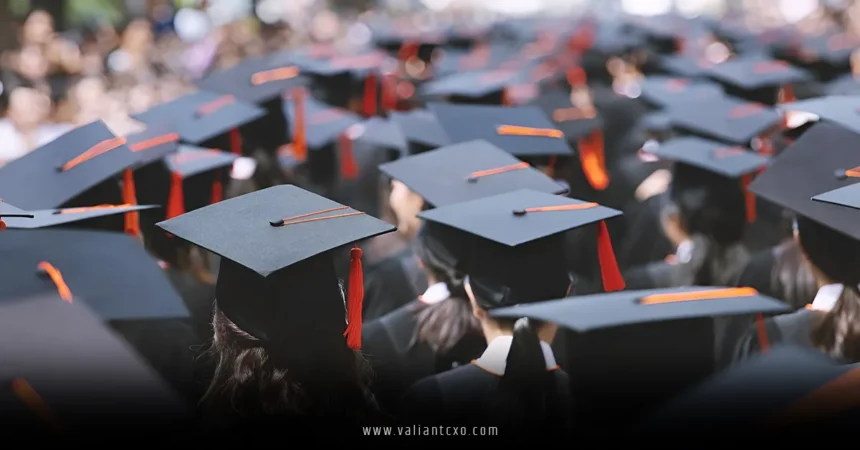Student Visa Changes Approved by White House have sent ripples through the international student community, and if you’re one of the millions dreaming of studying in the U.S., you’re probably wondering what this means for you. Imagine you’re planning a big road trip—your map’s all set, but suddenly the roads change, and you’ve got to reroute. That’s what these visa updates feel like for students worldwide. The Department of Homeland Security (DHS) has proposed replacing the long-standing “duration of status” system for F-1 and J-1 visas with fixed-term limits, a shift that could reshape how international students plan their academic journeys. Let’s dive into what these changes entail, why they’re happening, and how they might affect you.
What Are the Student Visa Changes Approved by White House?
The Student Visa Changes Approved by White House mark a significant pivot from the current system. Right now, F-1 and J-1 visa holders can stay in the U.S. for the entire duration of their academic program or internship—no fixed expiration date, just a flexible “duration of status” tied to enrollment. But the new proposal flips this on its head. Instead of an open-ended stay, students would get a visa with a set time limit, likely two to four years, after which they’d need to apply for an extension to keep studying.
Why does this matter? Picture your visa as a movie ticket—before, it let you stay for the whole show, no matter how long it ran. Now, it’s like a ticket with a timer, and if the movie (or your degree) isn’t done when the clock runs out, you’ll need to buy an extension. This could mean extra paperwork, fees, and stress, especially for students in longer programs like PhDs or multi-year master’s degrees.
Why the Shift to Fixed-Term Visas?
So, why are the Student Visa Changes Approved by White House happening? The DHS says it’s about security and compliance. They argue that fixed-term visas make it easier to track who’s in the country and ensure students aren’t overstaying their welcome. It’s like putting a leash on a system they think has been too loose. The proposal also includes stricter vetting, like checking social media profiles and reinstating in-person consular interviews starting September 2, 2025. These steps aim to catch any red flags early, but they could slow down the visa process significantly.
On the flip side, universities and student advocates aren’t thrilled. They worry these changes could scare off international talent, pushing students to countries like Canada or the UK, where visa rules are often less restrictive. With over a million international students in the U.S. each year, this isn’t just about paperwork—it’s about the economy, diversity, and the global reputation of U.S. higher education.
How Do the Student Visa Changes Approved by White House Impact Students?
The Student Visa Changes Approved by White House could hit students in different ways, depending on their country, program, and plans. Let’s break it down.
More Paperwork and Costs
Under the new rules, if your program runs longer than your visa’s term, you’ll need to file for an extension using USCIS Form I-539. This isn’t just a quick form—it requires proof of enrollment, funding, and compliance with the Student and Exchange Visitor Information System (SEVIS). Plus, there’s a filing fee, which can strain budgets already stretched thin by tuition and living costs. Imagine you’re juggling classes, exams, and a part-time job, and now you’ve got to carve out time and money for visa renewals. It’s like adding a pop quiz to an already packed semester.
Longer Visa Processing Times
The Student Visa Changes Approved by White House also bring back in-person interviews for most F-1 and J-1 applicants, ending the pandemic-era waivers that sped things up. Starting September 2, 2025, you’ll likely need to visit a U.S. consulate, which could mean long wait times, especially in busy locations like India or China. For students from countries like India, where over 420,000 are enrolled in U.S. schools, this could create bottlenecks. It’s like waiting in line for a blockbuster movie premiere—except the stakes are your education, not just a ticket.
Uncertainty for Long Programs
If you’re pursuing a PhD or a multi-year degree, the fixed-term limits could be a headache. Say you’re an Indian student in a five-year engineering doctorate. Your visa might last four years, forcing you to apply for an extension mid-research. If there’s a delay or denial, you could face gaps in your legal status, disrupting your studies or even forcing you to leave. It’s like running a marathon but having to stop and renew your shoes halfway through.
Impact on Optional Practical Training (OPT)
The Student Visa Changes Approved by White House might also affect Optional Practical Training (OPT), which lets F-1 students work in their field for up to a year (or three years for STEM fields) after graduation. With fixed-term visas, aligning OPT with your visa status could get tricky. Universities are already asking DHS for clarity on how OPT will work under the new rules. Think of OPT as the encore after your academic concert—if the stage lights go out early, you might miss your chance to perform.
Why Are Universities Worried About the Student Visa Changes Approved by White House?
Higher education institutions are sounding the alarm. Groups like NAFSA: Association of International Educators predict a 30-40% drop in international enrollment, which could cost U.S. colleges $7 billion. Why? International students often pay full tuition, propping up university budgets. A decline could mean fewer programs, higher costs for domestic students, or even layoffs. It’s like a restaurant losing its best customers—suddenly, the whole business feels the pinch.
Then there’s the global competition angle. Countries like the UK and Canada offer multi-year study permits with fewer hurdles. If the U.S. makes it harder to study here, top talent might look elsewhere. Mike Henniger, CEO of Illume Student Advisory Services, told the Associated Press, “The American brand has taken a massive hit, and the U.K. is the one that is benefiting.” It’s like the U.S. is playing a high-stakes game of academic poker, and it might be bluffing with a weak hand.
What’s the Timeline for the Student Visa Changes Approved by White House?
The Student Visa Changes Approved by White House aren’t in effect yet. Here’s the roadmap:
- August 7, 2025: The White House cleared the DHS proposal, wrapping up its review.
- Next Steps: The rule will be published in the Federal Register, kicking off a 30-60 day public comment period. Students, universities, and advocacy groups can weigh in, potentially shaping the final version.
- Late 2025: DHS aims to finalize the rule, though legal challenges could delay things.
- September 2, 2025: In-person consular interviews for F-1 and J-1 visas resume, separate from the fixed-term proposal.
Nothing changes until the final rule is published, so students should use this time to prepare. It’s like knowing a storm’s coming—you don’t batten down the hatches after it hits.
How Can Students Prepare for the Student Visa Changes Approved by White House?
If you’re an international student or planning to become one, don’t panic. Here are some practical steps to stay ahead:
Check Your SEVIS Records
Your SEVIS record is your visa’s lifeline. Make sure it’s accurate—program dates, funding, and enrollment status all need to be spot-on. Errors could snag your extension application. Think of it as keeping your car’s registration current to avoid a ticket.
Plan for Extensions Early
If you’re in a long program, map out when your visa might expire and start gathering documents for Form I-539. You’ll need proof of funding, enrollment, and SEVIS compliance. It’s like prepping for a big exam—start early, and you won’t be cramming at the last minute.
Budget for Extra Costs
Visa extensions and consular interviews come with fees and travel expenses. For example, the SEVIS I-901 fee is $350 for F-1 students and $220 for J-1 students. Factor these into your budget now to avoid surprises.
Stay Informed
Follow updates from reliable sources like the U.S. State Department’s Student Visa page or USCIS. Join university forums or consult your school’s international office. Knowledge is power, like having a flashlight in a blackout.
What’s the Bigger Picture?
The Student Visa Changes Approved by White House are part of a broader debate about immigration and education. The U.S. wants to stay a top study destination, but it’s balancing that with security concerns. For students, it’s a reminder that studying abroad is a privilege, not a guarantee. It’s like booking a flight—you can plan every detail, but turbulence might still shake things up.
On the bright side, these changes could streamline compliance and make the system more transparent. But the risk is real: if the U.S. makes it too hard for students to come or stay, it could lose its edge as a global education hub. For now, the proposal is just that—a proposal. The public comment period gives students and schools a chance to push for adjustments, like longer initial visa terms or smoother extension processes.
Conclusion
The Student Visa Changes Approved by White House are a game-changer for international students, swapping open-ended stays for fixed-term visas that could add hurdles to your U.S. education journey. While the DHS aims to boost security, the potential for delays, costs, and disruptions has universities and students on edge. Whether you’re a prospective student or already enrolled, now’s the time to get informed, plan ahead, and advocate for a system that keeps the U.S. welcoming to global talent. Your dream of studying in America is still within reach—stay proactive, and you’ll navigate these changes like a pro.
FAQs
1. What exactly do the Student Visa Changes Approved by White House mean for F-1 visa holders?
The Student Visa Changes Approved by White House replace the “duration of status” system with fixed-term limits, likely 2-4 years. F-1 visa holders will need to apply for extensions if their program exceeds this period, adding paperwork and potential delays.
2. How will the Student Visa Changes Approved by White House affect PhD students?
PhD students, especially in fields like engineering or sciences, may face challenges if their visa expires before their program ends. They’ll need to file for extensions, which could disrupt research if processing is slow or applications are denied.
3. Are there any countries exempt from the Student Visa Changes Approved by White House?
The proposal applies to all F-1 and J-1 visa holders, but specific restrictions, like travel bans, affect countries like Afghanistan, Iran, and Venezuela. Check the State Department’s website for country-specific rules.
4. When will the Student Visa Changes Approved by White House take effect?
The changes are still in the proposal stage. After a 30-60 day public comment period following Federal Register publication, DHS aims to finalize the rule by late 2025, though legal challenges could delay implementation.
5. How can students prepare for the in-person interview requirement in the Student Visa Changes Approved by White House?
Starting September 2, 2025, most F-1 and J-1 applicants will need in-person consular interviews. Prepare by completing the DS-160 form, auditing your social media, and gathering documents like financial proof and SEVIS records. Visit USCIS for guidance.
For More Updates !! : valiantcxo.com


